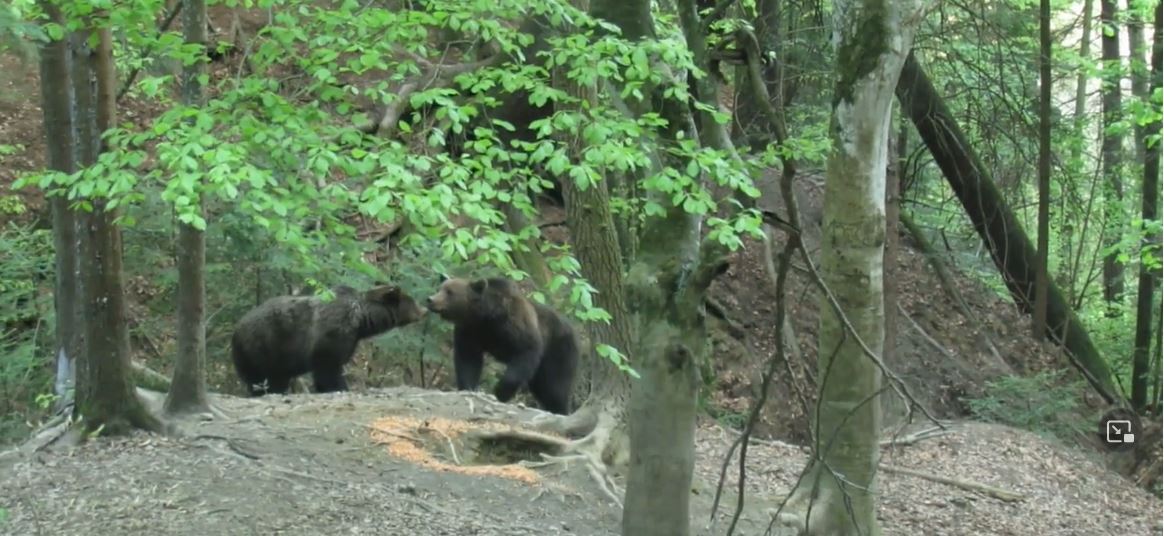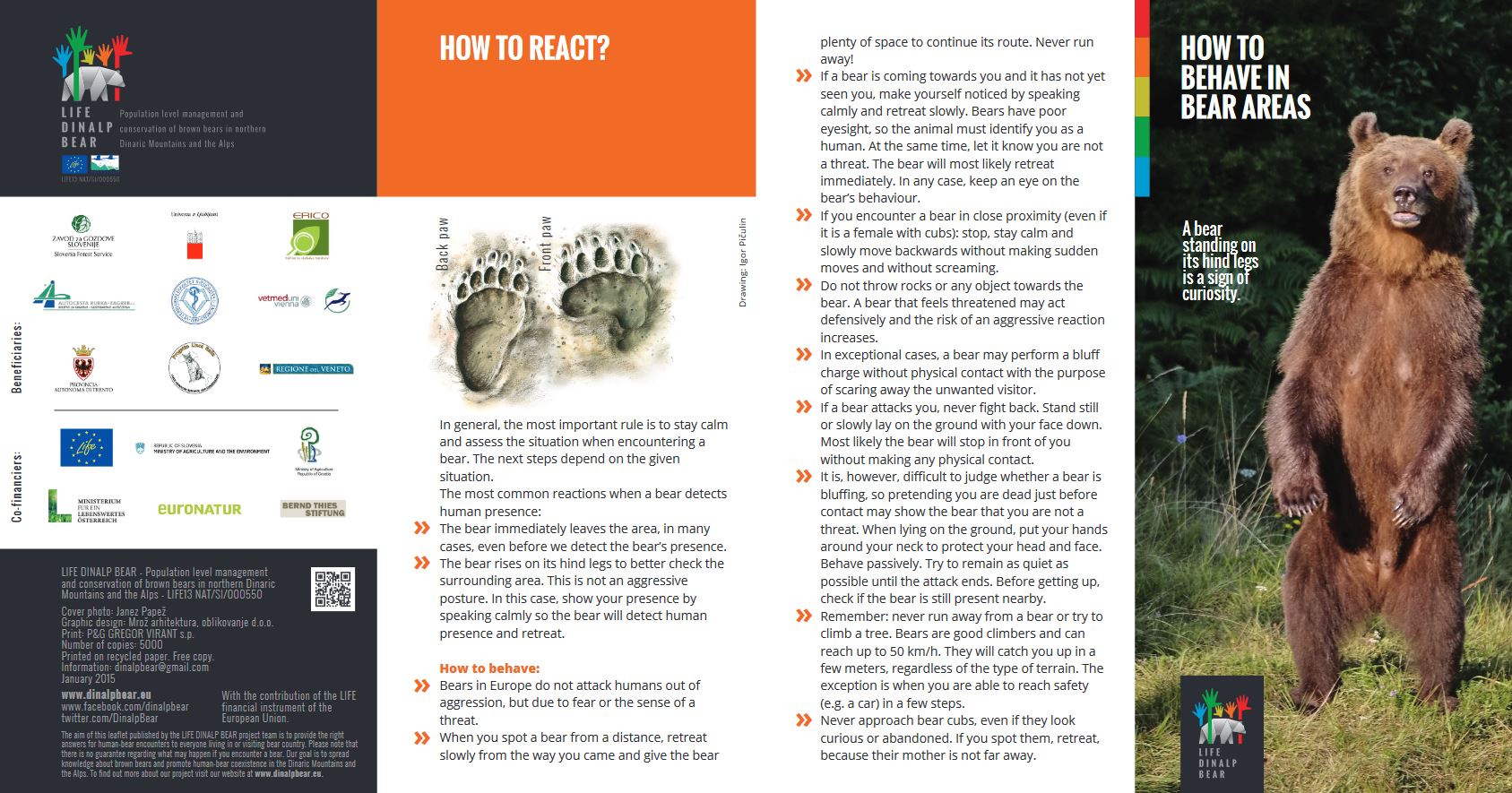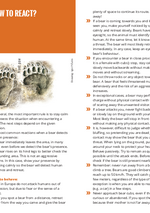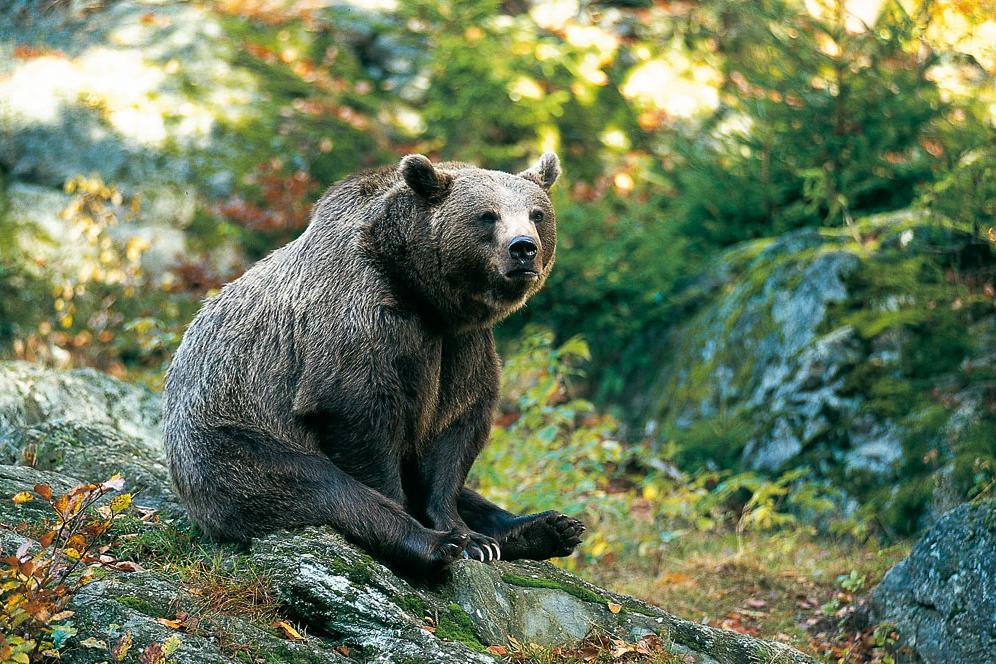
Where do brown bears live?
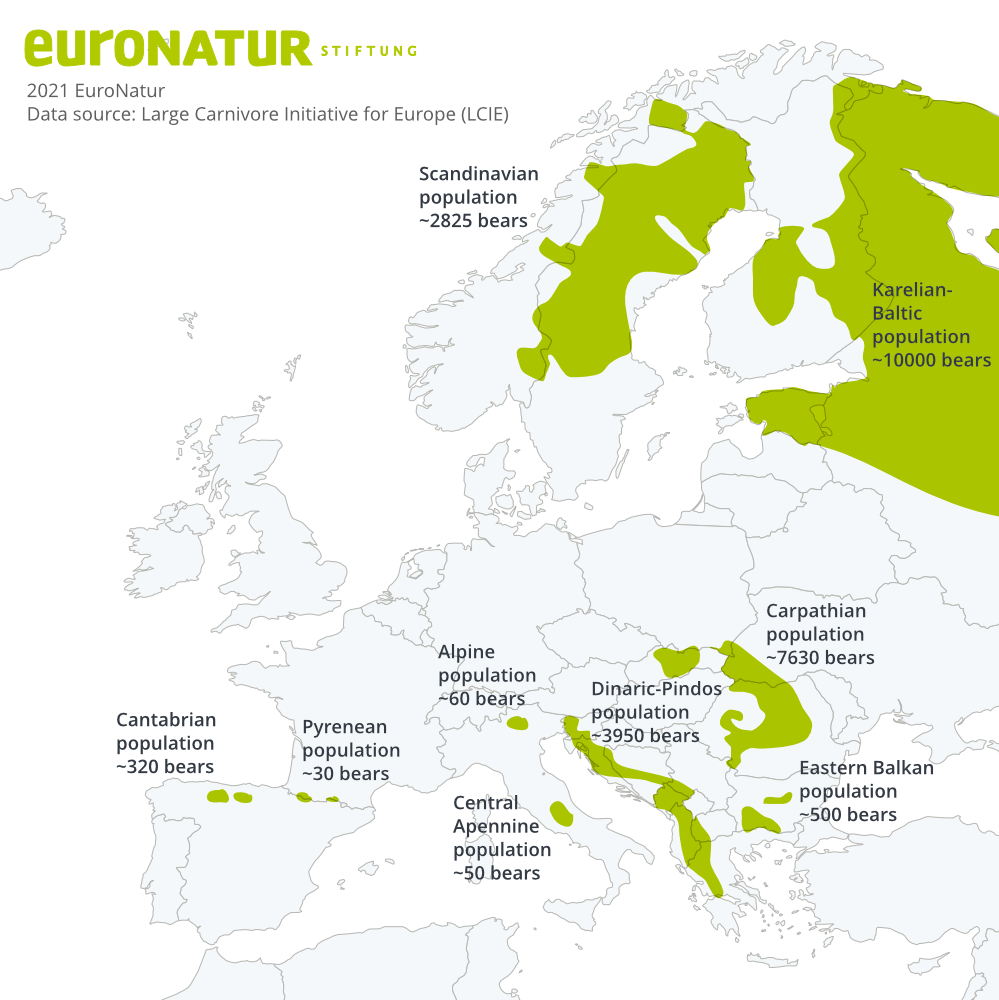
Brown bears used to live wherever there was forest - and that was in almost all of Europe. Due to deforestation, bears have been pushed further and further back. As early as the Middle Ages, the bear’s habitat had become confined to hard-to-reach and still densely forested mountain areas. Today, Central Europe’s last remaining bear areas are found in steep, often rocky, extensive forests where humans rarely venture.
By nature, bears are very shy creatures. As soon as they detect the scent of a human, they retreat. A suitable habitat therefore has to provide not only a rich supply of food but also sufficient areas for refuge. These areas are important for hibernation; the females also raise their young during this period.
Today, the Carpathian Mountains have the highest population density of brown bears in Europe (outside Russia). Major populations also still exist in the Western Balkans and in Scandinavia. Bear populations in the Alps, the Apennines and on the Iberian Peninsula are all highly endangered. However, in the Cantabrian Mountains in northern Spain at least, the number of brown bears has been steadily increasing since the end of the 1990s - the result of tireless work by EuroNatur and its Spanish project partner Fapas.
Brown bear characteristics
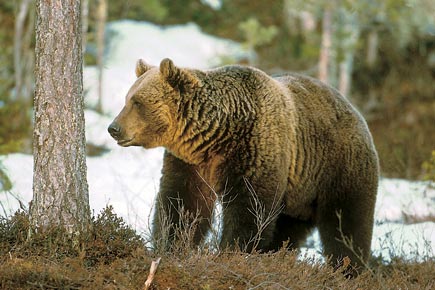
Brown bears are among the most stately animals on our continent.
© Wolfgang Bojahr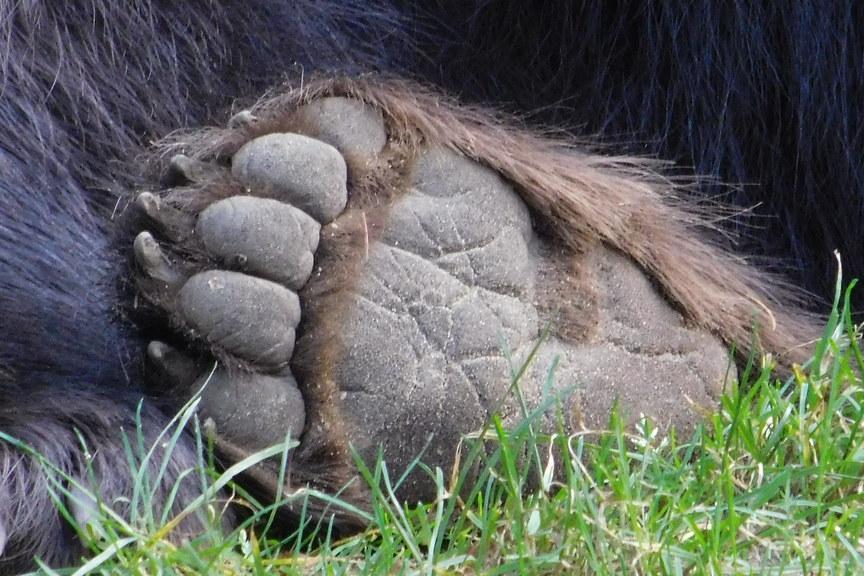
A Bear Paw: Not unlike the human foot
© Frauke SchmaljohannThe brown bear is easily recognisable; with its broad head, long snout and small round ears, the animal is unmistakable. Brown bears are the largest terrestrial carnivores in Central Europe. When standing upright, they can reach a height of between 1.70 and 2.20 metres. Depending on habitat, their weight varies between 100 and 350 kilos. In all populations, however, the males are significantly bigger and heavier than the females. Brown bears have a stumpy tail which is so small that it can’t be seen in the bear’s thick fur.
Bears have short, strong legs with large paws and long claws, which - like wolves - they are unable to retract. It is these claws that make young bears in particular such excellent climbers - an ability which can be life-saving. As plantigrades, bears place the entire sole of the foot on the ground, just as we humans do. The bear’s front paw is approximately 16 centimetres long, whilst its back paw measures around 26 centimetres.
What do brown bears eat?
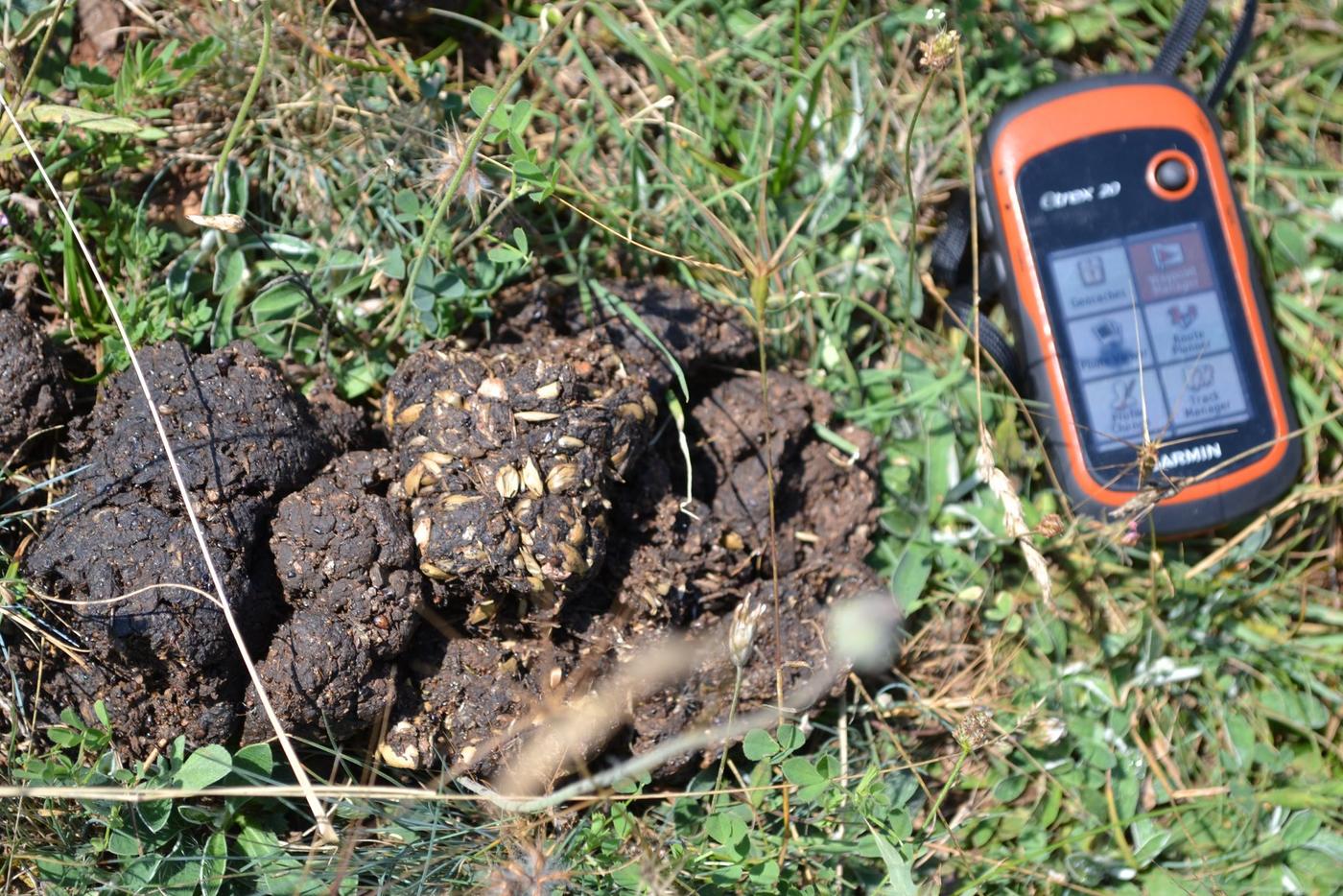
Can you tell what this brown bear had for lunch? The bears' excrement is also a subject of research; you can learn a lot about the animals' ecology from it.
© PPNEADepending on their range, brown bears derive up to three quarters of their nutritional needs from plant matter. In summer and autumn, they feed mainly on fruit, nuts and tree fruits such as acorns, chestnuts and beechnuts. During this time, they have to consume about 20,000 calories a day (the equivalent of about 30 kilos of apples) in order to put on sufficient fat for the winter. When bears leave their den in spring, there is little food available. They meet their nutritional needs at this time with roots, grasses and herbs as well as insects. Carrion from wild or grazing animals that have fallen victim to the winter also forms an important food source during this period. Those with a trained eye can spot a bear territory simply by looking out for the animal’s droppings. Their colour, texture and smell all reveal what the bear has eaten.
Reproduction and social behaviour of brown bears
The breeding season for brown bears falls during the months of May to July. Bears are polygamous and can mate several times with different partners. They are also solitary; after mating, the males and females go their separate ways. The fertilised egg floats freely in the female’s uterus for up to five months, implanting itself only at the beginning of hibernation. It is at this point that the actual gestation period begins.
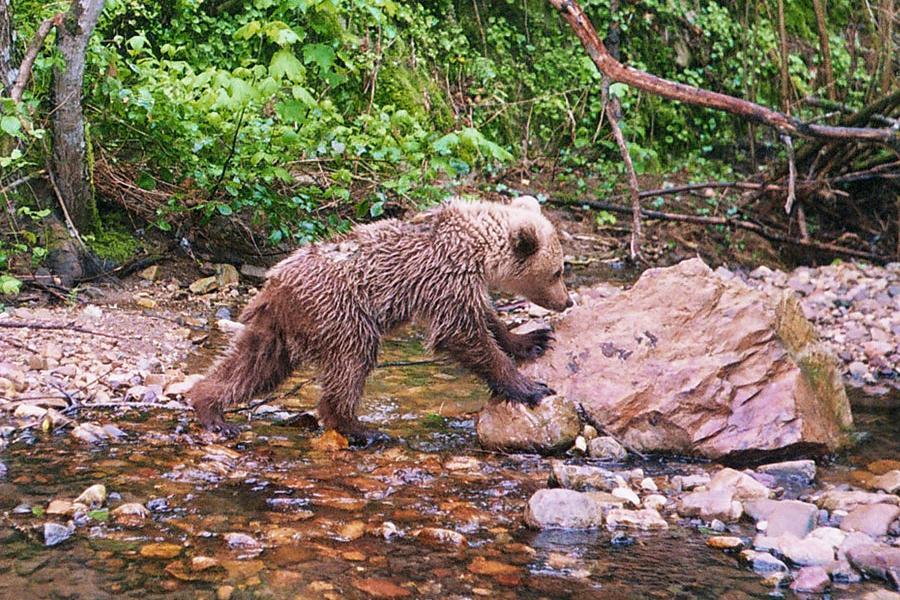
Bear cub in Spain
© FapasBetween January and March, two to three cubs are born in the winter den. Compared to their mother, the newborns are tiny. They weigh no more than 500 grams at birth and are naked and blind. It is only in spring, when the baby bears have grown and it is warmer outside, that they leave the den for the first time, slowly but surely following their mother. During this phase, the mother bear is extremely aggressive and will occasionally attack male bears if they come too close to her litter. People hiking in bear areas need to be particularly careful at this time.
The cubs stay with their mother for one and a half to two and a half years. As soon as she is ready to mate again, the mother bear leaves her offspring. The siblings live together for a few more months and then seek out their own territories.
Are brown bears endangered?
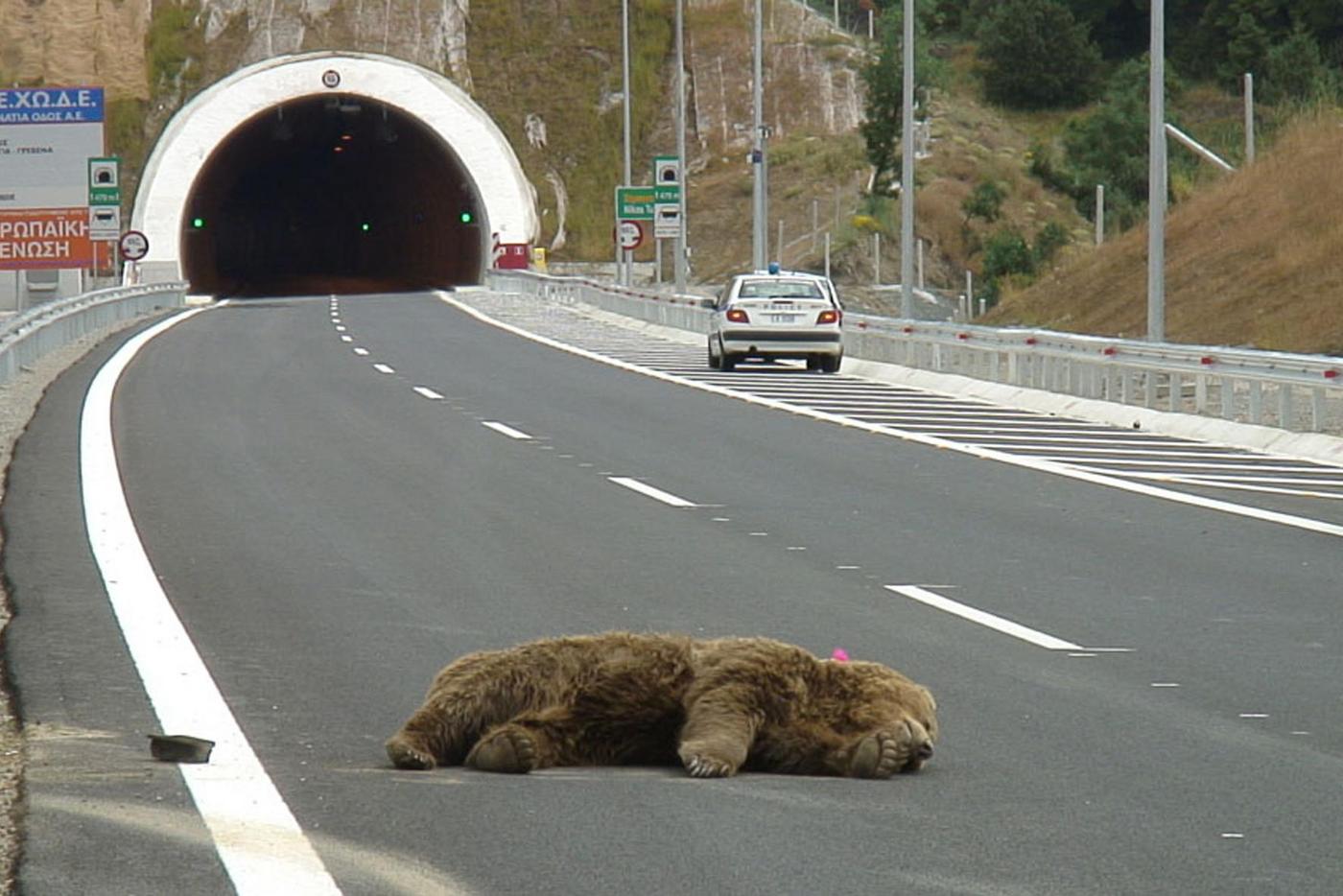
Time and again, brown bears are hit by cars. For the bear, these crashes are usually fatal but a collision with an enormous animal is dangerous for the driver too.
© A.Riegler/Callisto NGOIt is estimated that bears can live 20 to 30 years in the wild. However, their average life expectancy is only six years. Many bears die from malnutrition or disease, although the biggest threat to the brown bear comes from humans. In some countries, bear hunting is still commonplace and the animals often fall victim to poachers. Furthermore, the construction of transport routes is fragmenting their habitats and isolating populations from one another. Road traffic accidents involving bears are also on the increase.
In many European countries, bears are protected by law. International agreements in which bear protection is enshrined include the Bern Convention, the Washington Convention on International Trade in Endangered Species of Wild Fauna and Flora, and the EU Directive on the Conservation of Natural Habitats and of Wild Fauna and Flora.
What should you do if you encounter a bear?
Encountering a bear whilst hiking is extremely unlikely. However, if you do come across one, we have put together the most important things you need to know in our “How to Behave in Bear Areas” leaflet. This has been optimised for screen display or for download as a pdf file.
How to behave in bear areas
(8 MB)


